Imagine a colossal globe—six times larger in diameter than the “Spaceship Earth” geodesic sphere at Disney’s Epcot Center and supported by a base as tall as the original Ferris Wheel—towering over the 1893 Columbian Exposition fairgrounds. Miles of tramway would carry visitors along a spiral path rising inside the globe and then emerge and continue ascending around the exterior to an observation pinnacle eclipsing any man-made structure. That stupendous vision emerged from the mind of Alberto de Palacio in 1890.
As America prepared to host the 1893 World’s Fair in Chicago, planners yearned for an architectural wonder that would surpass the Eiffel Tower of the 1889 Exposition Universelle in Paris. Engineers, architects, and dreamers answered the call, with plans ranging from the derivative to the imaginative to the outrageous to the impossible. One architectural contest received an astounding proposal from Spain.
A student of Gustave Eiffel from 1883 to 1884, Basque architect Alberto de Palacio (1856-1939) submitted a plan for an enormous structure to serve as a monument to Columbus. A newspaper wire service story in late 1890 reported on Palacio’s design, noting that “he would construct a little world, stand it upon an ornamental pedestal of truss iron work and crown all at the north pole with a reproduction of the caravel in which Columbus sailed to discover America.” A map of the world would cover the outside of the structure, estimated to cost $6 million to build. The architect insisted that admission tickets would more than pay for this cost and that the enormous globe would be structurally sound. “Architect Palacio stakes his reputation on the perfect feasibility of this construction, which is to be largely of iron,” the press reported.
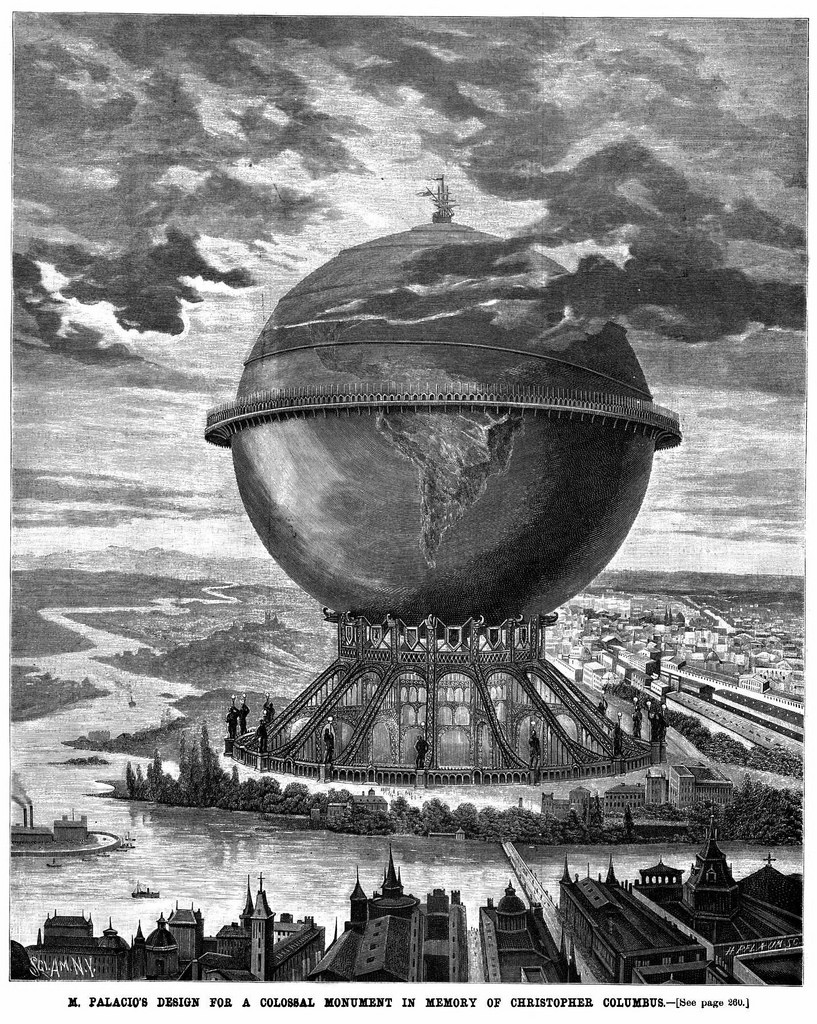
The Palacios Sphere concept. [Image from Scientific American Oct. 1890.]
The Plan for a Colossal Sphere at the World’s Fair.
Scientific American (October 25, 1890) provided this detailed description of Palacio’s plan:
The construction of the Eiffel tower has awakened the pride of the nations. It is said that North America proposes to construct an iron tower which shall be higher than the one in Paris. England also desires to have a monumental tower.
When North America proposed a competition for the construction of a tower to be erected at the Universal Exposition of 1892, a Spanish architect, a native of Bilboa (sic), Mr. M. Alberto de Palacio, drew an original design, of which we publish an engraving.
Mr. De Palacio has conceived a most perfect form, the sphere, which could not have been used prior to the knowledge of iron as a building material, because only by the modern methods of uniting the various parts, of which this material is susceptible, could a sphere be produced with a diameter of nearly 1,000 feet, that is, equal to the height of the Eiffel tower. This idea symbolizes the geographical completion of the earth which was realized by Christopher Columbus’ discovery of the New World.
The following is a description of the magnificent design: The colossal sphere is mounted on a base which is 262 feet high, and is crowned at its North Pole by the caravel which carried Columbus to the New World. The monument is brilliant with the colors of the continents, oceans and islands of the terrestrial sphere.
The sphere will be encircled at the equator by a platform 3,280 feet, or more than half a mile, long. An exterior spiral running around the northern hemisphere will form a track nearly two miles long, leading from the equator to the North Pole. At night the sphere will be illuminated by the lines of light which will form the outlines of the continents and islands, thus casting over the city torrents of refulgent brilliancy. The great pyramids of Egypt, the Sphinx, and the Colossus could lie in the hollow interior like jewels in their case. So much for the exterior aspect.
An interior track runs around the southern hemisphere from the South Pole to the Equator, where it joins the exterior spiral. The total length of the spiral is nearly four miles, over which the sightseer can travel on a tramway.
In the base and under the majestic central rotunda will be placed a gigantic statue of the great discoverer surrounded by the navigators and missionaries who rendered his discovery fruitful. In the semicircle around this Olympus of heroes, inclosing (sic) the amphitheater, will be allegorical statues representing all the Spanish nations.
In the remaining spaces of the compartments in the base a large Columbus library will be distributed; auditorium for the cultivation of the natural sciences, museums of zoology, mineralogy, and botany of America, rooms for the Spanish Geographical Society, a great naval museum in the interior central compartment, a meteorological observatory in the hull of the caravel. All this is independent of the promenades, cafes, and restaurants for the public.
In the interior the celestial sphere can be exactly reproduced. It can also be used for magnificent panoramas, because the spherical form is the best for obtaining illusions of perspective. There will be a place for public entertainments.
This astonishing monument can serve as a perennial remembrance of the first Spanish-American and Colonial Exposition.
Mr. Palacio secures the stability of this immense mass by means of a simple method similar to that used for equestrian statues, so that the sphere will be able to resist winds of greater force than a cyclone.From a business point of view Mr. Palacio makes the following calculation:
One hundred thousand spectators paying an entrance fee of $1, will bring $100,000. This will replace the capital in 62 days, without counting the profits of the cafes, entertainments, etc. The estimated total cost is $6,000,000.INDISPENSABLE DATA FOR THE ESTIMATE.
Diameter of the sphere ……………………….. 984 ft.
Elevation of the sphere above the ground ……. 262 ”
Total height of the monument ………………. 1,312 ”
Surface of the sphere ……………………… 337,989 sq. yd.
Volume …………………………………….. 18,492,341 ”
Length of the equatorial platform …………… 3,280 ft.
Length of the ascending spiral ……………… 19,684″
Total pressure, of the wind of a hurricane against
the monument …………………….. 42,390,000 lbs.ESTIMATE.
Cost of the sphere and its base ………………………….. $5,059,200
Cost of the machinery, elevators and other accessories … $1,240,000The architect, Mr. Palacio, is the designer of the movable bridge at Bilboa (sic), used in connection with the submarine railway of Orton on the coast of Spain.
— La Ilustracion Espanola y Americana.
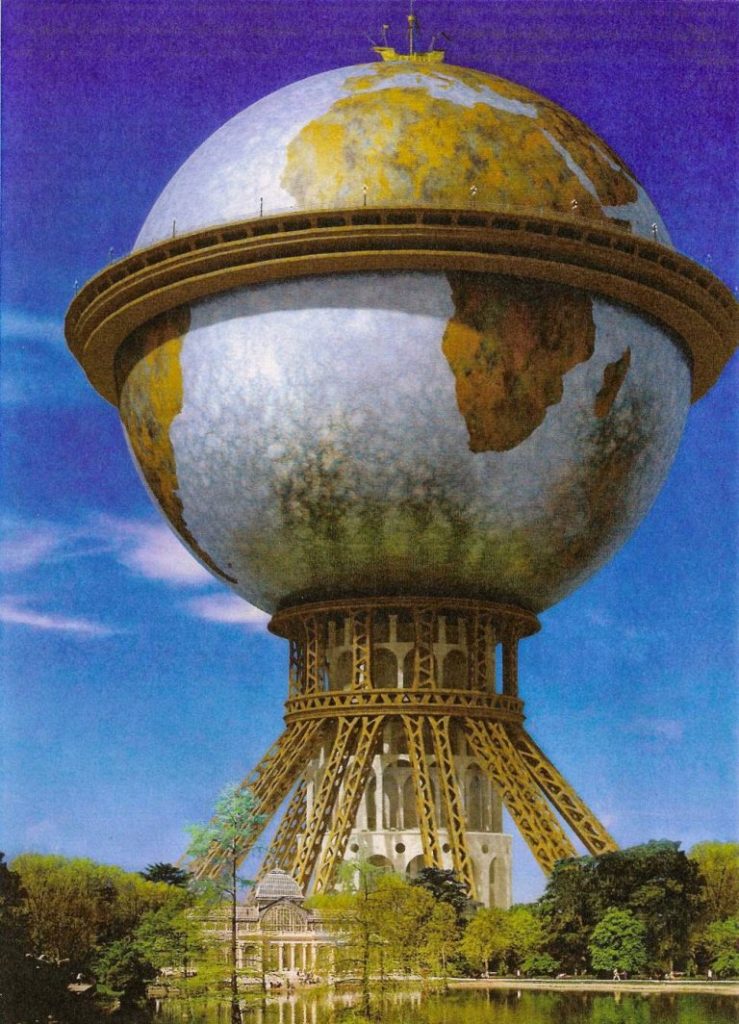
Palacio’s re-designed globe for the city of Madrid
When Alberto de Palacio submitted his remarkable plan in 1890, Chicago had not yet established the site for the 1893 World’s Fair. The shadow cast by such an enormous sphere could have left much of the White City in the dark. If built, this 1312-foot-tall attraction would have been (by far!) the tallest man-made structure in the world, a record it would keep through 1931 as the Empire State Building in New York reached 1250 feet into the air and ending only in 1967 when the slender, 1762-foot Ostankino Tower in Moscow rose.
Alberto de Palacio later proposed a redesigned version of his globe for a park in Madrid, but the physical and economic challenges of his colossal structure remained insurmountable. He would make a name for himself designing the Vizcaya Bridge, completed in 1893. This transporter bridge, the first in the world to use a suspended gondola for carrying people and traffic, stretches across the Biscay province of Spain.
Of course, the great Ferris Wheel ultimately won the challenge to “out-Eiffel the Eiffel Tower” and astounded visitors at the 1893 World’s Fair. While the history of the fair-that-was offers endless fascination, the fair-that-could-have-been is also fun to explore.
SOURCES
“M. Palacio’s Design for a Colossal Monument in Memory of Christopher Columbus” Scientific American, Oct. 25, 1893, p. 260.
“A Huge Globe” The (Washington D.C.) Evening Star Oct. 25, 1890, p. 11.
“World of Iron” (San Francisco) Morning Call Nov. 9, 1890, p. 9.

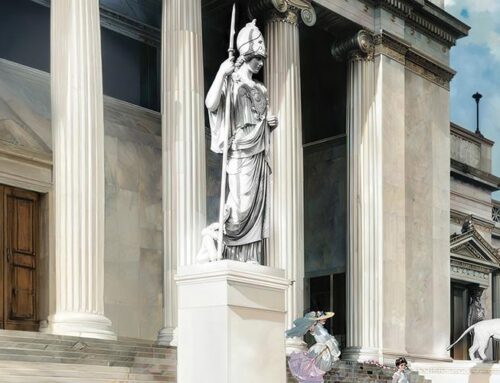
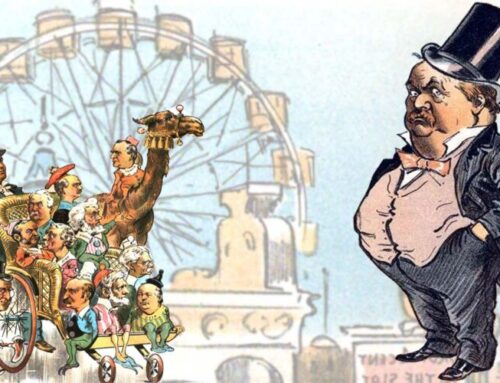
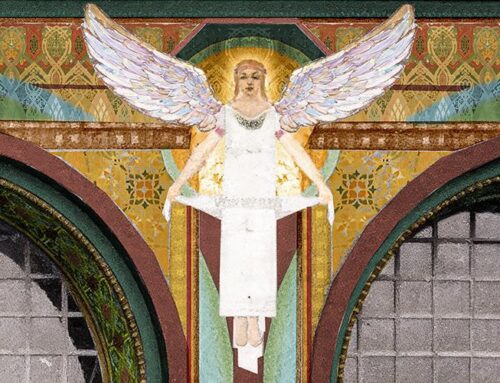
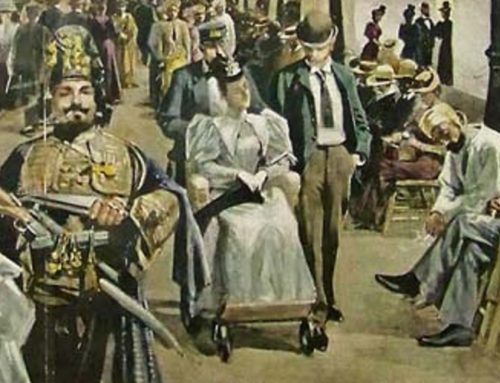

Leave A Comment